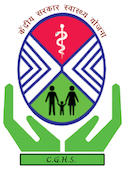Postmenopausal is a period after menopause. It is defined as the time after which a female experiences 12 consecutive months of amenorrhea or lack of menstruation.
Female reproductive years naturally ends up in three stages without any medical intervention:
- Perimenopause
- Menopause
- Post-menopause
To understand post-menopausal syndrome in a better way, let us also discuss perimenopause and menopause in detail.
Perimenopause – Perimenopause is the first stage in this process that starts 8 to 10 years before menopause. Common symptoms of perimenopause include night sweats, vaginal dryness, and hot flashes.
Menopause – Menopause is the point when a female will no longer have periods for at least 12 consecutive months. It is the normal part of aging and the end of her reproductive years. It typically happens in the late forties to early 50. Females who undergo surgery to remove ovaries experience surgical menopause.
Postmenopausal – After menopause, a female enters the post-menopausal stage.
Postmenopausal is the state where the bothersome symptoms that a female experience during perimenopause gradually decreases. However, due to lower levels of oestrogen and several other factors, she may suffer from post-menopausal syndrome and is at increased risk of several health conditions such as heart diseases and osteoporosis.
Facts on Post-menopausal Syndrome
- Post-menopausal are all the years beyond menopause.
- If you are a female above 45 years of age and there is absence of periods for a year, you may get a blood check done to confirm approaching postmenopausal. There is a dramatic rise in the level of follicle stimulating hormones as female ovaries begin to stop functioning.
- The possibility to get pregnant disappears postmenopausal.
- After menopause, a woman regains energy but is at increased risk of heart diseases and osteoporosis.
- Women in postmenopausal show lower bone mineral densities (BMD)
- With increase in average life expectancy, it is concluded that many females may spend half of their life as postmenopausal.
- Only a few post-menopausal females reports loss of libido
- Osteoporosis, a degenerative bone disease, and heart disease are the most serious potential health concerns of the postmenopausal years.
Symptoms of Post-Menopausal Syndrome
- No more hot flushes – As the hormones settle down, perimenopause symptoms such as hot flashes also settle down.
- Shrinking of breasts – The menopausal breast loses firmness and elasticity. The breast shrinks, changes in shape, and becomes prone to lumps.
- Changes in weight distribution – After menopause, it is less likely that fat settles on thighs or hips but is more likely to settle on the waistline. It is bodies attempt to hoard oestrogen in fats cells around the waistline. However, experts also warn that this kind of fat may be associated with heart disease, stroke diabetes, and even cancer.
- Vaginal dryness – Due to no production of oestrogen, the level of mucus that is produced by the vaginal gland decreases. This leads to vaginal dryness
- Painful sex or dyspareunia – Post menopause the vaginal and the vulva skin become less elastic and thin. In addition, the production of lubricating mucus decreases, and sex becomes uncomfortable and painful.
- Vaginal bleeding – 20 to 30 percent of post-menopausal females experience vaginal bleeding after sex.
- Insomnia – Changes in the level of hormones make it difficult for the post-menopausal female to fall asleep.
- Passing pee on laughing – Oestrogen has a very important role in maintaining the functioning of the bladder and pelvic muscles in order. As the level of oestrogen decreases, there is a loss of bladder control.
- Rise in the blood pressure – Oestrogen has its role in keeping the blood vessels flexible. Post-menopausal, due to a decrease in the level of oestrogen hormone, the blood pressure rises along with the rise in bad cholesterol. Thus, the risk of stroke and heart diseases increases.
- Osteoporosis – Osteoporosis is thinning of bones due to loss of oestrogen in body. A female loses up to 25 percent of bone density following menopause until she reaches 60 years of age. Due to osteoporosis, she become susceptible to bone fractures.
Other postmenopausal symptoms include changes in sex drive, headaches, difficulty concentrating, hair loss, racing heart, a worsening of PMS, and numerous emotional changes. Postmenopausal symptoms can seriously affect your everyday life. These conditions lead to a significant reduction in the quality of life of both the affected individual and their relatives, so if you are suffering from these symptoms, see our doctor.
What Causes Postmenopausal Syndrome
In general, menopause is a normal part of every female life. A few females who have undergone hysterectomy may experience menopause prematurely. After menopause rest of her life, she spend post-menopausal. Postmenopausal women are at increased risk for several health conditions, such as osteoporosis and heart disease.
How Post-menopausal Syndrome Occurs
After the menopause, the level of the hormone remains continuously low. Females do not experience menstrual cycles, and there is a natural decline in the functions of the ovaries. The ovaries produce a low level of oestrogen, progesterone, and testosterone, and the total serum level of these hormones in the female declines. The female is unable to get pregnant. Due to the low level of oestrogen hormone, she is at increased risk of postmenstrual syndrome.
Postmenopausal can be separated into early post-menopause and late post-menopause.
The early menopause is the first five years since the final menstrual cycle. It is the phase where the level of follicle-stimulating hormone continues to be high. Still, there is a significant decline in the ovarian hormones. Due to a permanently low level that is associated with accelerated bone loss. After early postmenopausal, the female enters late post-menopause. Late postmenopausal is the stage where the ovarian hormones remain consistently low, and there is an increased risk of heart diseases.
Post-menopause syndrome is distressing, but Ayurveda has ways to deal with and reduce the risk of osteoporosis and heart diseases.













